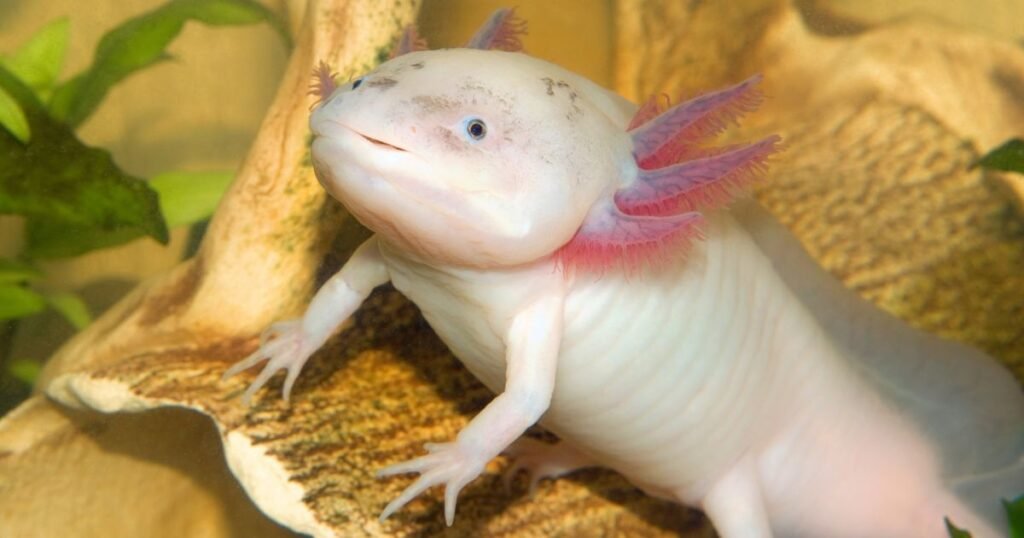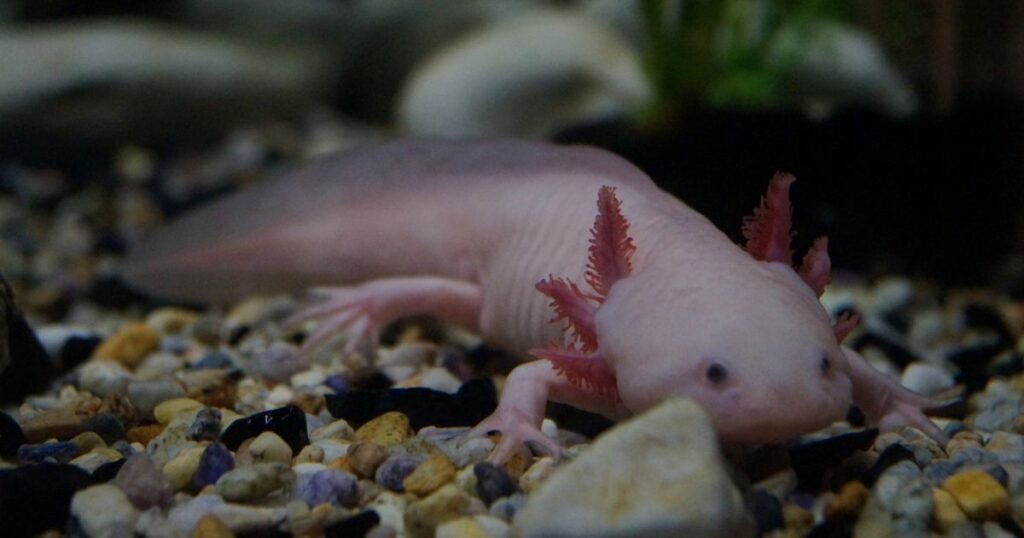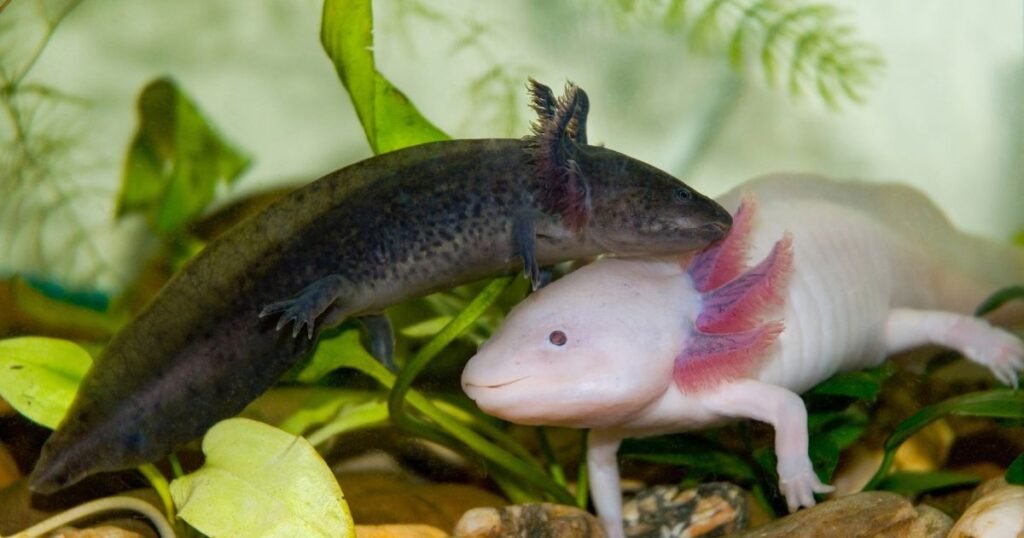At first glance, the Albino Axolotl may seem like any ordinary salamander, but upon closer inspection, it becomes evident that this creature is a rare and fascinating one. In this article, we will delve deeper into the world of Albino Axolotls and explore their unique features and characteristics.
Albino Axolotls are mesmerizing and rare salamanders that make for captivating pets. This blog post delves into their unique features and provides a comprehensive guide on adequately caring for them. You’ll learn about their stunning white coloration, peculiar ability to regenerate body parts, and fascinating behavior.
Our guide also covers the requirements for keeping Albino Axolotls, such as tank size, water quality, and feeding habits. If you’re considering adding an Albino Axolotl to your collection of exotic pets, this post is a must-read.
What is an Albino Axolotl?

An Albino Axolotl is a type of salamander that lacks melanin, which gives them their unique white appearance. These creatures are a type of neotenic salamander, which means that they retain their larval characteristics even when they reach adulthood. They are native to the Xochimilco and Chalco regions of Mexico, where they are considered a critically endangered species due to habitat loss and pollution.
Read More: The Black Axolotl
Albino Axolotl Physical Features

The Albino Axolotl has a unique appearance that sets it apart from other salamanders. Their white skin lacks pigmentation, and their eyes are red due to the lack of melanin in their irises. They have external gills that protrude from the back of their heads, which they use to breathe underwater. Their long, slender bodies are covered in small, delicate scales, and they have four limbs that end in webbed feet.
Albino Axolotl Behavior

The Albino Axolotl is a fascinating creature with unique behaviors. Unlike other salamanders, they retain their larval characteristics and do not undergo metamorphosis into adults. They are fully aquatic and spend their entire lives in water, which makes them an excellent choice for aquariums. They are also capable of regenerating their limbs, spinal cord, heart, and other organs, making them one of the few creatures in the animal kingdom that can do so.
Albino Axolotl Feeding Habits

Albino Axolotls are carnivorous and primarily feed on small aquatic creatures such as worms, insects, and small fish. They have a voracious appetite and will eat anything that fits into their mouths. It’s essential to provide them with a varied diet to ensure they receive all the necessary nutrients they need to remain healthy.
Albino Axolotl Habitat and Care

Albino Axolotls require specific living conditions to thrive. They need a large aquarium with clean, freshwater that is regularly maintained. The water temperature should be between 60-64°F, and the pH level should be around 7.4-7.6. They also require hiding places and areas to rest, such as rocks, plants, and other decorations. It’s important to avoid using decorations that are sharp or rough, as they can damage the delicate skin of the Albino Axolotl.
Albino Axolotl Lifespan
The Albino Axolotl, a type of salamander that lacks pigmentation in its skin and has pinkish gills and eyes, has a relatively long lifespan compared to other amphibians. In captivity, they can live for around 10-15 years if provided with proper care. However, their lifespan in the wild is generally shorter due to various factors, including pollution and habitat loss.
To ensure the longevity of Albino Axolotls, it is crucial to maintain their tank’s water quality and temperature and provide them with a well-balanced diet. Regular health check-ups by a veterinarian specializing in exotic animals can also help detect potential health issues and provide appropriate treatment.
Conclusion
In conclusion, the Albino Axolotl is a unique and fascinating creature that deserves more attention and protection. With their rare appearance, regenerative abilities, and unique behaviors, they make excellent pets for those who can provide them with the care they require. As a critically endangered species, it’s important that we do our part to protect them and their habitat for future generations to enjoy.
FAQs
Question 1: What is an Albino Axolotl?
Answer 1: An Albino Axolotl is a type of salamander that lacks pigmentation in its skin and has pinkish gills and eyes. It is also known as a white axolotl.
Question 2: What is the lifespan of an Albino Axolotl?
Answer 2: The lifespan of an Albino Axolotl is around 10-15 years in captivity if kept in proper conditions.










